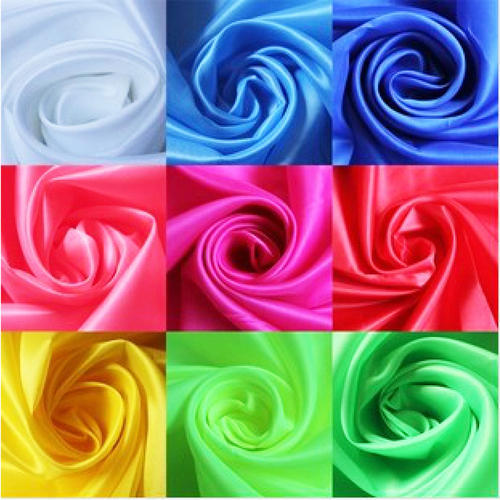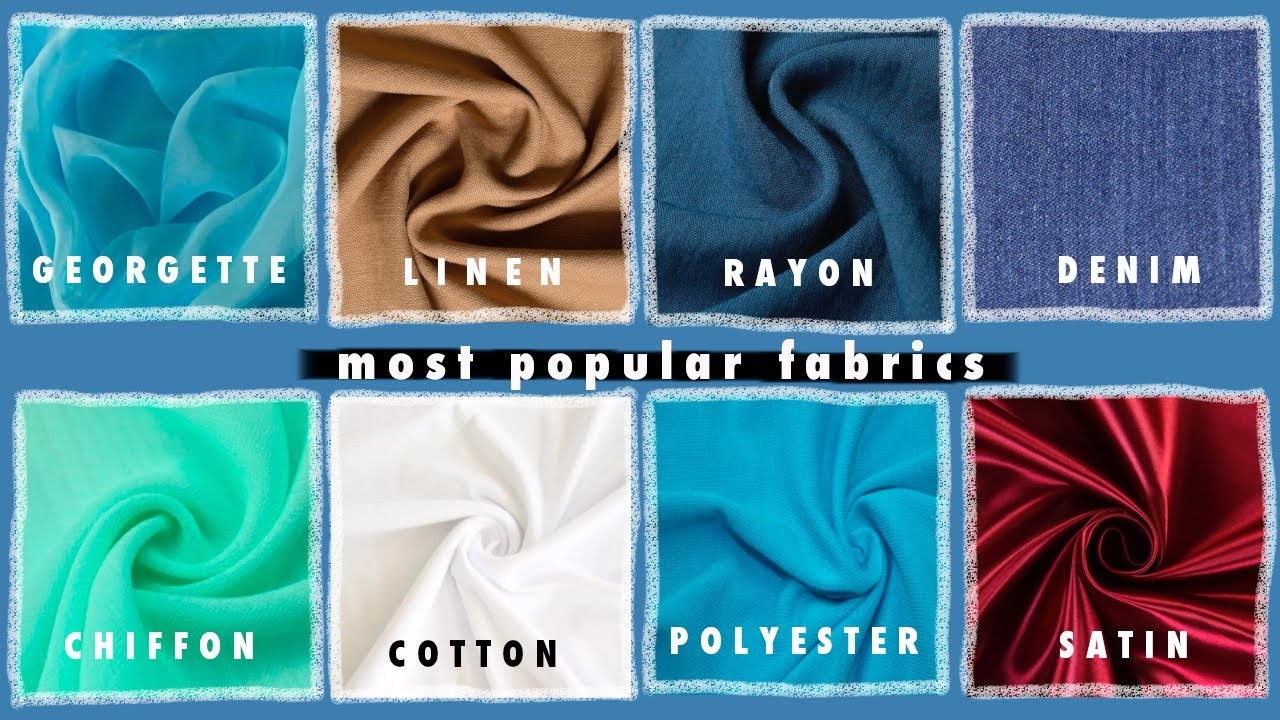Is everyone enjoying their seats? Because we’re about to start learning about fabrics!
There’s a chorus of groans resonating from my screen, but in all seriousness, there has never been a more better time for you to become knowledgeable about the things you’re putting on your body. Honestly conscientious consumers are concerned with the materials used to make their clothes and how to care for them.
Let us Get Starting
Cotton, The most generally used textile in the world, this sturdy little material may be found in everything from bed sheets to jeans, t-shirts, underwear, and more.
Cotton is a natural fiber when grown, spun, and pressed into the form we see hanging in our closets. However, it’s crucial to remember to purchase organic cotton whenever possible while shopping for cotton. Organic cotton is produced beyond the use of pesticides and hazardous chemicals that contaminate water supplies and farm workers. It is sustainable, renewable, and biodegradable. Since no chemicals are used in the harvesting or farming processes, organic cotton also doesn’t have any chemical residues; therefore, if you have sensitive skin or allergies, you can wear the item without worrying about any reaction.
Cotton is a resilient and long-lasting fabric that requires little maintenance. Shrinkage is the only thing you need to be cautious of it. When initially washed, cotton frequently shrinks and can also lose its shape in the dryer. Your friends in this situation are cold washing cycles and eco-friendly detergent. Your cotton clothing can either be hung to dry on a line or removed from the dryer while still damp, allowing any remaining moisture to drain naturally.
Silk is one of the most charming materials in the world. It is wealthy and gorgeous, and all your favorite designers use it. It is obtained from silkworms, who use it to make the threads that line the cocoons, which develop into the fabrics we use today.
It should be noted that this fabric is produced by killing silkworms. There are vegan silk products available in which the worms are not harmed and the threads are extracted from their cocoons after they have already emerged. The natural, chemical-free silk manufacturers who let the worms dwell in the wild and don’t utilize chemicals during the harvesting process are vastly superior to those who do. Check to see if the silk used by your favorite brands is produced responsibly.
The typical way of caring for a silk garment is handwashing in cold water, while some will need to be dry cleaned. Silk clothing should never be spot cleaned, in contrast to other textiles. If you do, a stain might be left in that spot, changing the color by spot cleaning. If you’re unsure about removing the stain on your own, wash the entire item while extracting the stain, or take it to a professional.
Linen, All tropical people love linen, made from the flax plant. The weave allows the fabric to breathe next to your skin, and linen’s hardness keeps it away from your body, compliant it to dry fast as the air circulates it. And by physically hot, I mean that linen is the best fiber for keeping you cool during the heat.
In addition to being durable, sustainable, and adaptable, it is also one of the most environmentally friendly materials available. You should attempt to choose linen in tones like grey, tan, ivory, and ecru because linen is biodegradable when it is undyed. These also happen to be fashionable neutrals for the foundation of your wardrobe, in addition to the natural colors of linen.
You should attempt to choose linen in tones like grey, tan, ivory, and ecru because linen is biodegradable when it is undyed. These also are fashionable neutrals for the foundation of your wardrobe, in addition to the natural colors of linen. In addition to being durable, sustainable, and adaptable, it is also one of the most environmentally friendly materials available.
It’s simple to maintain your linen accessories. They are washable in a washing machine and can be tried hanging out. Seriously, there isn’t much wrong with linen cloth other than the fact that it wrinkles readily. Make linen the star of your wardrobe by seeking pieces from us.
Nylon, you have nylon in your closet if you own anything stretchy, like a pair of tights. Nylon is one of the most commonly used plastic materials, used in everything from underwear to athletic equipment.
The bad news is that nylon cannot biodegrade, making it a plastic that will remain in landfills for a long time. Nylon manufacture has historically negatively influenced the environment due to the high energy and water requirements and the greenhouse gas emissions that are a byproduct.
The good disclosure is that several manufacturers are working to develop more environmentally friendly nylon. For instance, some companies have begun using nylon made from recycled plastic products, such as fishing nets.
Wool, without wool, where would we be? I assume it’s frigid. This 100% natural fiber is knit into sweaters and cardigans or spun into fine threads and used to produce coats and jackets, thanks to sheep. It is the foundation of our winter outfits.
Wool is a low-impact material with a robust local production network found in Australia and New Zealand. (Look for the Australian Wool Exchange or Woolmark symbol when purchasing wool products.) It is renewable, biodegradable, and highly resilient.
Your wool clothing can last a lifetime if you treat it well. Woolen clothing won’t shrink when dried flat, so keep it out of the dryer if you don’t want it on the mat. If your washing machine has a wool cycle, buy a specialized woolen detergent and wash your clothes by hand or in the machine.
Polyester, this one is one of the most widely used synthetic fabrics in the fashion industry. It holds its shape, dries quickly, and doesn’t frequently wrinkle or fold. It is inexpensive to create and buy, simple to maintain, strong, and light.
You must have known there would be a bit, though. – Since it is synthetic and polymers are used to make it, it cannot decompose naturally. Your entire polyester trash will be dumped in a landfill. Additionally, because polyester doesn’t breathe, people with sensitive skin or allergies may have trouble wearing it.
Recycled polyesters are available, particularly those made from used plastic bottles, similar to recycled nylon. Leading the charge in this area are international designers like Stella McCartney and Australian labels like Kit X, which source recycled polyesters for their collections.
Rayon, and cotton are somewhat related because they both come from regenerated cellulose fiber. However, cellulose in cotton comes from the cotton plant, whereas cellulose in rayon comes from wood pulp. The lengthy procedure requires using chemicals to ensure that the trees produce enough cellulose to make the rayon. The final product is a fiber that can be blended with others, like cotton, polyester, and silk.
The versatility and multifunctionality of rayon make it valuable in the fashion business. It can take on the characteristics of anything, including linen, wool, and silk, and is simple to work with and dye. However, it is not very durable and frequently needs to be hand-washed to extend its shelf life.
However, all the chemicals that go into making rayon are an issue. These substances not only harm the environment but also pose a serious risk to rayon industry workers. Dr. Paul Blanc, a professor at the University of California, claims that people who work in the rayon sector have developed heart attacks, strokes, Parkinson’s disease, and other severe, chronic health issues.
Having said that, it is up to you to generate demand for ethical and ecological fabrics. If these materials are not readily available, then the next best option is to use timeless designs that won’t end up in landfills. Be careful when you shop and take care of your clothing. Read our most recent post for advice on how to look after your possessions better.
“taken? Dr. Paul Blanc talks about his book “Fake Silk,” which investigates the industrial danger of cellulose viscose, whose atrocious past is on par with asbestos, lead, and mercury. Recorded
Dr. Paul Blanc
Quality of the fabric
You must feel the item against your skin to determine whether it is of high quality before even determining whether it is made of linen, cotton, polyester, or nylon. The fabric must be devoid of flaws, especially those related to dye, pattern, fibers, tears, and other issues. The fabric should be of the highest quality possible since if it contains flaws, you will undoubtedly have clothes manufactured that show those flaws.

- Color Fastness.
- Shrinkage.
- Suitability and Location.
- Pattern
- Fabric weight

